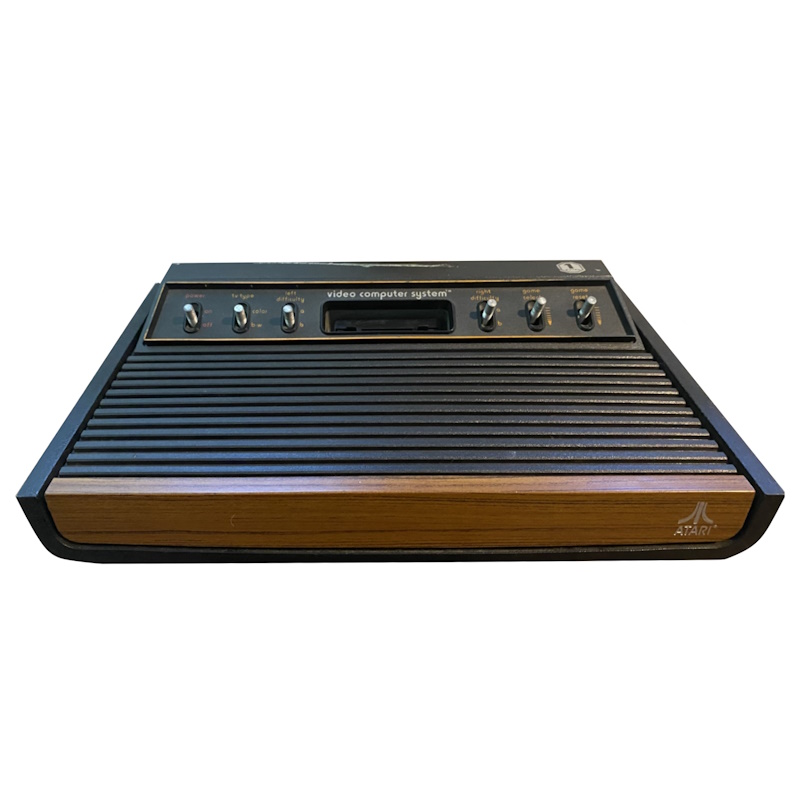|
History
Epoch was already a major player in the Japanese video game market. They started with the release on the TV Tennis in September 1975. The game was made entirely from discretely linked TTL chips. Creating a game using discrete logic was extremely complex. In fact, Epoch only released another console using this technology, the System 10 which was another Pong-like system with 10 built-in games. During the cycle of development of the System 10, Epoch and NEC jointly created a microprocessor (uPD77xx) that would later become the core of the Cassette Vision. The time to release games using this technology was tremendously improved, to a point that the first stand-alone console to use this technology, the TV Baseball, was released in August 1978, one month before the System 10 even though the development of the TV Baseball started almost a year after the System 10.
In 1979, Atari was looking to expand outside of North America, however, Japan was not a priority as, at the time, it was not considered as a big video game market. It was also notably difficult to enter the Japanese market for foreign company. At the same time, Epoch was looking to expand their domination over the video game market in Japan. With Bandai, one of Epoch most active competitor in the Japanese video game industry, developing its own cartridges based video game console called the Super Vision 8000, Epoch had to act fast. The fast-selling Atari 2600 seems to be the answer Epoch was looking for. As Atari had no immediate plan to enter the Japanese market on their own, being distributed by Epoch seems to be a mutually beneficial partnership.
Release
Epoch released the now called Cassette TV Games in Japan on October 8, 1979 at a very step price of ¥57,300. The first few months were not very good sales-wise. The price point was the first major problem. Video game consoles at the time were selling around ¥15,000, so around 25% of the Cassette TV Games asking price. Although these game consoles were dedicated console with no interchangeable game, it was difficult to convince customers to invest that much in an home gaming machine.
The second problem was the released of the Super Vision 8000 in December of the same year. While the price point of the Super Vision 8000 was similar to the one of the Cassette TV Games, it had one major advantage: the inclusion of Vader Missile, an unlicensed clone of Space Invaders. Released by Taito on April 1st, 1978, Space Invaders was the arcade hit of 1978. By the end of 1979, more than 400,000 units were deployed across Japan, grossing around ¥10,000 per machine per day. A Space Invaders clone was in itself, reasons enough to choose the Super Vision 8000 over the Cassette TV Games. Epoch quickly reached to Atari asking them to strike a deal with Taito to released Space Invaders for the Atari 2600. Atari managed to obtain the license from Taito and started developing a port for the Atari VCS (which would later be renamed the Atari 2600). Released in March 1980, it instantaneously become the best game on the system, helping to double the sales of the console to more than 2 million units in the North America.
Sadly, even with the released of Space Invaders, the Cassette TV Games sales were very disappointing. The Super Vision 8000 was also experimenting the same difficulties, which seems to prove that the price point was just too high. By the end of 1980, the price was reduced to ¥47,300, but by that point, Epoch had already more or less lost faith in the Cassette TV Games and was already moving toward other projects.
Demise
While commercializing the Cassette TV Games, Epoch, who wanted to cash in on the Space Invaders craze, also released in 1980 the stand-alone console called TV Vader. The console was Epoch takes on Space-Invaders using the same hardware as the TV Baseball, a proprietary microprocessor developed jointly by Epoch and NEC. With their experience on their own proprietary hardware, Epoch realized that they could create a cartridge-based system that would be far cheaper than the Cassette TV Game and take over the Japanese market. And with this idea, they created the Cassette Vision, which was the final nail in the Cassette TV Games coffin.
Technology
The Cassette TV Games is basically the first released of the Atari VCS also known as an Atari Heavy Sixer. The only difference is that the Cassette TV Games can only output on the channel 1, therefore there’s no channel selector switch on these units. There is a sticker on the top right of the console and also on the bottom to this effect.

